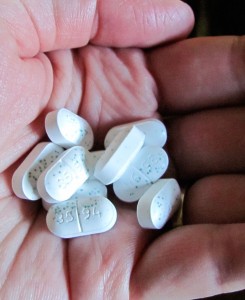 If you know someone who isn’t taking their prescription medicines as recommended by the doctor, chances are they might be involved in prescription drug abuse. When someone does not take their prescription drugs properly, or takes someone else’s prescription medicines, it is known as prescription drug abuse. The Drug Enforcement Administration categorizes certain medicines as controlled substances, and anyone who indulges in the improper use or abuse of such medicines is at a risk of being addicted to it.
If you know someone who isn’t taking their prescription medicines as recommended by the doctor, chances are they might be involved in prescription drug abuse. When someone does not take their prescription drugs properly, or takes someone else’s prescription medicines, it is known as prescription drug abuse. The Drug Enforcement Administration categorizes certain medicines as controlled substances, and anyone who indulges in the improper use or abuse of such medicines is at a risk of being addicted to it.
People who are abusing drugs can be engaged in either of the following activities:
-
Taking medicines in more than the prescribed quantity
-
Taking prescription drugs when not needed, or after the prescription has ended
-
Mixing prescription medicines with mood-altering substances such as drugs or alcohol
-
Taking medicines prescribed to someone else
Painkillers and antidepressants are commonly abused prescribed drugs. The problem of prescription drug abuse is a dangerous one, and such practices can lead to addiction. An overdose is another possibility, and can be fatal. Most prescription medicines are not addictive, and completely safe if taken in amounts prescribed by the doctor. If someone does not follow their doctor’s recommendations, they are taking the wrong path and highly prone to addiction.
What puts older adults at risk for addiction to prescription drugs?
The answer is very simple: More older adults are on prescription medicines than any other age group. Since they are exposed to more drugs, the chances of abuse is higher. Here’s a statistic that explains the scenario: Americans of age 65 and above only form 13% of the United State’s population; however, they represent 33% of all prescription drug consumers. Often, elderly people consume more than one medicine on a daily basis—this naturally increases the chances of drug interaction and mistakes in taking the right medicines in the prescribed doses.
Moreover, as one grows older, the ability of liver to filter out medicines decreases substantially, thereby increasing the chances of that person suffering from side-effects of a particular medicine.
What types of medicines are generally abused?
It is possible to abuse any medicine, but here are two types of prescription drugs that are most commonly consumed by older adults; in other words, they are the most commonly abused drugs:
Opioids are medicines to relieve pain, some common ones being OxyContin, Percocet, and Vicodin. Older adult who take too much of opioids or take them regularly are likely to be addicted to these drugs.
Benzodiazepines are medicines used in the treatment of anxiety and sleep disorders like insomnia. They are also used to treat panic attacks. The most common Benzodiazepines are Xanax, Valium, Klonopin, and Ativan. Just like Opioids, taking Benzodiazepines for a long time or taking them in high dosage can lead to addiction.
Besides, Benzodiazepines and Opioids, there are other prescription drugs that can also cause addiction problems.
What are the signs of prescription drug abuse?
If you feel that an older adult you know might be abusing prescription drugs, examine their behavior closely. An adult addicted to drugs may exhibit any of the following signs:
-
Consume higher doses of prescription drugs
-
Acquire multiple prescription of same drugs
-
Stock on prescription drugs by sourcing them from multiple pharmacies
-
Alter the dosage and amounts prescribed by the doctor
-
Exhibit withdrawal symptoms when they are away from the drugs
-
Defensive or aggressive attitude and behavior
-
Hide additional medicines at many places
What is the treatment for drug abuse?
The treatment will depend on several factors such as the nature of drug in question, and the severity of addiction. If you think you know someone who is abusing drugs, take them to a doctor for proper treatment. Consult the doctor who prescribed the drugs to the person. A mixture of counseling and medicine can help the person overcome their addiction.


